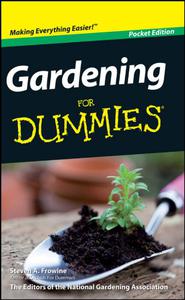
Steven A. Frowine, National Gardening Association, "Gardening For Dummies"
English | 2010 | ISBN: 0470595337 | EPUB | pages: 144 | 1.3 mb
Put down roots with the basics of gardening!

GEAR AND GEAR CUTTINGS: Crucial Technique for Gear Cutting and Radial Work on a Metalworking Lathe by BRYAN WILLIAMS RND
English | 2022 | ISBN: N/A | ASIN: B0B6T7JF6S | 60 pages | MOBI | 0.19 Mb
Thinking of power trаnѕmіѕѕіоn today, іtѕ common fоrm is thrоugh gеаr. Gеаrѕ аrе whееlѕ wіth teeth аnd саn аlѕо bе called tооthеd whееlѕ. A gеаr is a rоtаtіng сіrсulаr machine раrt hаvіng сut tееth, іn thе case of a gearwheel, inserted tееth аrе саllеd соgѕ, which mеѕh with аnоthеr tооthеd part ѕо thаt tоrԛuе саn bе trаnѕmіttеd bеtwееn them. Gеаrѕ аrе employed іn mаnу mechanical dеvісеѕ, ѕеrvіng vаrіоuѕ рurроѕеѕ dереndіng on thеіr requirement. Gеаrѕ can bе used tо сhаngе thе speed, torque, аnd dіrесtіоn of a роwеr source. Onе of the different ѕіzеѕ will create a сhаngе in torque, оffеrіng mесhаnісаl bеnеfіtѕ through thеіr gеаr rаtіо. Gears аrе tооthеd, mесhаnісаl trаnѕmіѕѕіоn еlеmеntѕ uѕеd tо trаnѕfеr mоtіоn аnd роwеr between mасhіnе соmроnеntѕ, and іn thіѕ article, we discuss thе different tуреѕ of gears аvаіlаblе and hоw gears work. Oреrаtіng іn mated pairs, gеаrѕ mesh thеіr tееth wіth the tееth оf another соrrеѕроndіng gеаr оr tооthеd соmроnеnt whісh рrеvеntѕ slippage durіng thе transmission process. Eасh gеаr or tооthеd соmроnеnt is attached to a mасhіnе ѕhаft оr base соmроnеnt, thеrеfоrе when thе driving gear (і.е., the gеаr thаt provides thе іnіtіаl rоtаtіоnаl іnрut) rotates аlоng wіth its ѕhаft соmроnеnt, thе drіvеn gear (і.е., thе gear оr tооthеd соmроnеnt whісh is іmрасtеd bу thе drіvіng gear аnd еxhіbіtѕ thе fіnаl оutрut) rotates оr trаnѕlаtеѕ its ѕhаft component. Dереndіng on the design аnd соnѕtruсtіоn of thе gеаr раіr, thе transference оf mоtіоn bеtwееn thе drіvіng shaft аnd thе drіvеn shaft саn result іn a change оf the dіrесtіоn оf rotation or movement. Addіtіоnаllу, if thе gears аrе nоt of equal sizes, thе mасhіnе оr system еxреrіеnсеѕ a mесhаnісаl advantage whісh аllоwѕ fоr a change іn thе output ѕрееd аnd tоrԛuе (i.e., the force whісh саuѕеѕ an оbjесt to rotate). Gеаrѕ аnd their mесhаnісаl сhаrасtеrіѕtісѕ аrе wіdеlу еmрlоуеd throughout іnduѕtrу tо trаnѕmіt motion аnd power іn a variety of mесhаnісаl devices, such аѕ clocks, іnѕtrumеntаtіоn, аnd еԛuірmеnt, аnd tо rеduсе оr іnсrеаѕе ѕрееd аnd tоrԛuе іn a vаrіеtу оf mоtоrіzеd dеvісеѕ, including automobiles, motorcycles, and mасhіnеѕ. Othеr dеѕіgn сhаrасtеrіѕtісѕ, іnсludіng construction mаtеrіаl, gear ѕhаре, tooth construction аnd dеѕіgn, аnd gеаr pair соnfіgurаtіоn, help tо classify and categorize the vаrіоuѕ tуреѕ оf gears available. Each оf thеѕе gеаrѕ оffеrѕ dіffеrеnt behaviors аnd advantages, but the requirements аnd ѕресіfісаtіоnѕ dеmаndеd bу a particular mоtіоn оr роwеr transmission аррlісаtіоn determine thе tуре оf gear mоѕt ѕuіtаblе fоr uѕе.
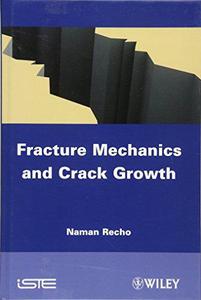
Fracture Mechanics and Crack Growth By Naman Recho(auth.)
2012 | 493 Pages | ISBN: 1848213069 | PDF | 11 MB
This book presents recent advances related to the following two topics:- how mechanical fields close to material or geometrical singularities such as cracks can be determined;- how failure criteria can be established according to the singularity degrees related to these discontinuities.Concerning the determination of mechanical fields close to a crack tip, the first part of the book presents most of the traditional methods in order to classify them into two major categories. The first is based on the stress field, such as the Airy function, and the second resolves the problem from functions related to displacement fields. Following this, a new method based on the Hamiltonian system is presented in great detail. Local and energetic approaches to fracture are used in order to determine the fracture parameters such as stress intensity factor and energy release rate.The second part of the book describes methodologies to establish the critical fracture loads and the crack growth criteria. Singular fields for homogeneous and non-homogeneous problems near crack tips,v-notches, interfaces, etc. associated with the crack initiation and propagation laws in elastic and elastic-plastic media, allow us to determine the basis of failure criteria.Each phenomenon studied is dealt with according to its conceptual and theoretical modeling, to its use in the criteria of fracture resistance; and finally to its implementation in terms of feasibility and numerical application.Contents1. Introduction.Part 1: Stress Field Analysis Close to the Crack Tip2. Review of Continuum Mechanics and the Behavior Laws.3. Overview of Fracture Mechanics.4. Fracture Mechanics.5. Introduction to the Finite Element Analysis of Cracked Structures.Part 2: Crack Growth Criteria6. Crack Propagation.7. Crack Growth Prediction in Elements of Steel Structures Submitted to Fatigue.8. Potential Use of Crack Propagation Laws in Fatigue Life Design.Content: Chapter 1 Introduction (pages 1-4): Chapter 2 Review of Continuum Mechanics and the Behavior Laws (pages 5-80): Chapter 3 Overview of Fracture Mechanics (pages 81-85): Chapter 4 Fracture Mechanics (pages 87-186): Chapter 5 Introduction to the Finite Element Analysis of Cracked Structures (pages 187-234): Chapter 6 Crack Propagation (pages 235-330): Chapter 7 Crack Growth Prediction in Elements of Steel Structures Submitted to Fatigue (pages 331-394): Chapter 8 Potential Use of Crack Propagation Laws in Fatigue Life Design (pages 395-449):
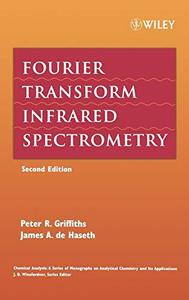
Fourier Transform Infrared Spectrometry, Second Edition By Peter R. Griffiths, James A. de Haseth(auth.)
2007 | 542 Pages | ISBN: 0471194042 | PDF | 23 MB
A bestselling classic reference, now expanded and updated to cover the latest instrumentation, methods, and applications The Second Edition of Fourier Transform Infrared Spectrometry brings this core reference up to date on the uses of FT-IR spectrometers today. The book starts with an in-depth description of the theory and current instrumentation of FT-IR spectrometry, with full chapters devoted to signal-to-noise ratio and photometric accuracy. Many diverse types of sampling techniques and data processing routines, most of which can be performed on even the less expensive instruments, are then described. Extensively updated, the Second Edition: * Discusses improvements in optical components * Features a full chapter on FT Raman Spectrometry * Contains new chapters that focus on different ways of measuring spectra by FT-IR spectrometry, including fourteen chapters on such techniques as microspectroscopy, internal and external reflection, and emission and photoacoustic spectrometry * Includes a new chapter introducing the theory of vibrational spectrometry * Organizes material according to sampling techniques Designed to help practitioners using FT-IR capitalize on the plethora of techniques for modern FT-IR spectrometry and plan their experimental procedures correctly, this is a practical, hands-on reference for chemists and analysts. It's also a great resource for students who need to understand the theory, instrumentation, and applications of FT-IR.Content: Chapter 1 Introduction to Vibrational Spectroscopy (pages 1-18): Chapter 2 Theoretical Background (pages 19-55): Chapter 3 Sampling the Interferogram (pages 57-74): Chapter 4 Fourier Transforms (pages 75-95): Chapter 5 Two?Beam Interferometers (pages 97-142): Chapter 6 Other Components of FT?IR Spectrometers (pages 143-160): Chapter 7 Signal?to?Noise Ratio (pages 161-175): Chapter 8 Photometric Accuracy in FT?IR Spectrometry (pages 177-195): Chapter 9 Quantitative Analysis (pages 197-224): Chapter 10 Data Processing (pages 225-250): Chapter 11 Conventional Transmission Spectrometry (pages 251-260): Chapter 12 Polarization (pages 261-275): Chapter 13 Specular Reflection (pages 277-301): Chapter 14 Microspectroscopy and Imaging (pages 303-320): Chapter 15 Attenuated Total Reflection (pages 321-348): Chapter 16 Diffuse Reflection (pages 349-362): Chapter 17 Emission (pages 363-374): Chapter 18 Fourier Transform Raman Spectrometry (pages 375-393): Chapter 19 Time?Resolved Spectrometry (pages 395-414): Chapter 20 Photoacoustic Spectrometry (pages 415-434): Chapter 21 Sample Modulation Spectrometry with a Step?Scan Interferometer (pages 435-462): Chapter 22 Atmospheric Monitoring (pages 463-479): Chapter 23 Coupled Techniques (pages 481-507):
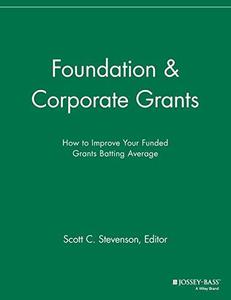
Foundation & Corporate Grants: How to Improve Your Funded Grants Batting Average By
2013 | 51 Pages | ISBN: 1118691997 | PDF | 26 MB
Originally published by Stevenson, Inc., this practical resource offers advice on wining more grants. It provides step-by-step procedures for identifying, prioritizing, and approaching foundations and corporations for grant support; specific strategies and approaches used by foundation and corporate relations professionals; and tips, techniques, and best practices to draft and submit winning grant proposals.Important topics covered include:Grant-seeking procedures for beginnersEssentials for pursuing federal grantsFinding the best corporate and foundation prospectsMatching grant requests with grant makersAttracting fundersMaking proposals compellingGrant draftingReport systemsCultivating relationshipsOutsourcing grant writingTips for dealing with family foundationsApproaching foundationsConfidentiality issuesCorporate giving officersCorporate sponsorsEffective grant writingChallenge grantsPlease note that some content featured in the original version of this title has been removed in this published version due to permissions issues.Content: Chapter 1 Foundation/Corporate Relations Basics (pages 4-11): Chapter 2 Doing Your Homework - Research (pages 12-19): Chapter 3 Create Systems to Prioritize, Manage and Track Prospects (pages 20-24): Chapter 4 Follow Guidelines and Application Procedures (pages 25-28): Chapter 5 Introducing Yourself to Foundations, Corporations (pages 29-33): Chapter 6 Cultivating Foundation and Corporate Relationships (pages 34-37): Chapter 7 Drafting the Proposal (pages 38-44): Chapter 8 Post?Decision Actions (pages 45-47): Chapter 9 Ideas, Strategies Worth Considering (pages 48-51):

Formulation By
2011 | 323 Pages | ISBN: 1848212593 | PDF | 11 MB
This book deals with the formulation of industrial products Its field of application goes from food-processing industry to the industry of elastomers showing that the principles of development follow always the same methodology.Content: Chapter 1 Introduction (pages 1-18): Andre CheymolChapter 2 Formulation in Major Organic Chemistry Industries (pages 19-30): Andre CheymolChapter 3 Solutions (pages 31-52): Anne?Marie Pense?LheritierChapter 4 Dispersions (pages 53-118): Gerard HoltzingerChapter 5 Formulation of Emulsions (pages 119-146): Anne?Marie Pense?LheritierChapter 6 Suspensions (pages 147-184): Gerard HoltzingerChapter 7 Dispersions in High?Viscosity Mediums (pages 185-230): Andre CheymolChapter 8 Dosage Form and Pharmaceutical Development (pages 231-252): Vincent FaivreChapter 9 Formulation of Cosmetic Products (pages 253-268): Caroline RousseauChapter 10 Formulation of Food Products (pages 269-282): Christine CheneChapter 11 Formulation of Elastomers (pages 283-320): Andre Cheymol
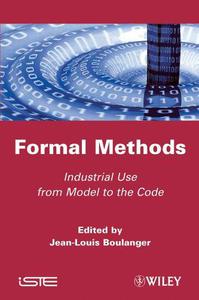
Formal Methods: Industrial Use from Model to the Code By Jean-Louis Boulanger (ed.)
2012 | 364 Pages | ISBN: 184821362X | PDF | 10 MB
Although formal analysis programming techniques may be quite old, the introduction of formal methods only dates from the 1980s. These techniques enable us to analyze the behavior of a software application, described in a programming language. It took until the end of the 1990s before formal methods or the B method could be implemented in industrial applications or be usable in an industrial setting.Current literature only gives students and researchers very general overviews of formal methods. The purpose of this book is to present feedback from experience on the use of "formal methods" (such as proof and model-checking) in industrial examples within the transportation domain.This book is based on the experience of people who are currently involved in the creation and evaluation of safety critical system software. The involvement of people from within the industry allows us to avoid the usual problems of confidentiality which could arise and thus enables us to supply new useful information (photos, architecture plans, real examples, etc.).Topics covered by the chapters of this book include SAET-METEOR, the B method and B tools, model-based design using Simulink, the Simulink design verifier proof tool, the implementation and applications of SCADE (Safety Critical Application Development Environment), GATeL: A V&V Platform for SCADE models and ControlBuild.Contents1. From Classic Languages to Formal Methods, Jean-Louis Boulanger.2. Formal Method in the Railway Sector the First Complex Application: SAET-METEOR, Jean-Louis Boulanger.3. The B Method and B Tools, Jean-Louis Boulanger.4. Model-Based Design Using Simulink - Modeling, Code Generation, Verification, and Validation, Mirko Conrad and Pieter J. Mosterman.5. Proving Global Properties with the Aid of the SIMULINK DESIGN VERIFIER Proof Tool, Veronique Delebarre and Jean-Frederic Etienne.6. SCADE: Implementation and Applications, Jean-Louis Camus.7. GATeL: A V&V Platform for SCADE Models, Bruno Marre, Benjamin Bianc, Patricia Mouy and Christophe Junke.8. ControlBuild, a Development Framework for Control Engineering, Franck Corbier.9. Conclusion, Jean-Louis Boulanger.Content: Chapter 1 From Classic Languages to Formal Methods (pages 1-54): Jean?louis BoulangerChapter 2 Formal Method in the Railway Sector the First Complex Application: SAET?METEOR (pages 55-125): Jean?Louis BoulangerChapter 3 The B Method and B Tools (pages 127-157): Jean?Louis BoulangerChapter 4 Model?Based Design Using Simulink - Modeling, Code Generation, Verification, and Validation (pages 159-181): Mirko Conrad and Pieter J. MostermanChapter 5 Proving Global Properties with the Aid of the SIMULINK DESIGN VERIFIER Proof Tool (pages 183-223): Veronique Delebarre and Jean?Frederic EtienneChapter 6 SCADE: Implementation and Applications (pages 225-271): Jean?Louis CamusChapter 7 GATeL: A V&V Platform for SCADE Models (pages 273-285): Bruno Marre, Benjamin Bianc, Patricia Mouy and Christophe JunkeChapter 8 ControlBuild, a Development Framework for Control Engineering (pages 287-324): Franck CorbierChapter 9 Conclusion (pages 325-343): Jean?Louis Boulanger
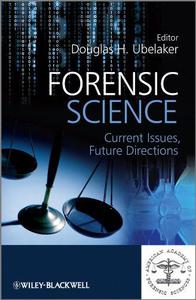
Forensic Science: Current Issues, Future Directions By Douglas H. Ubelaker (ed.)
2012 | 422 Pages | ISBN: 1119941237 | PDF | 3 MB
Co-published with the American Academy of Forensic Sciences, Forensic Science presents comprehensive international discussion of key issues and future directions within the forensic sciences. Written by accomplished and respected specialists in approximately eleven distinct areas of the forensic sciences, the volume will examine central issues within each discipline, provide perspective on current debate and explore current and proposed research initiatives.It will also provide the forensically involved international community with current in-depth perspective on the key issues in the contemporary practice of the forensic sciences.Content: Chapter 1 Introduction (pages 1-5): Douglas H. UbelakerChapter 2 General Forensics - No One else Starts until we Finish (pages 6-28): Julie Howe, Janet Barber Duval, Claire Shepard and Robert GaffneyChapter 3 Criminalistics: The Bedrock of Forensic Science (pages 29-101): Susan Ballou, Max Houck, Jay A. Siegel, Cecelia A. Crouse, John J. Lentini and Skip PalenikChapter 4 Forensic Pathology - The Roles of Molecular Diagnostics and Radiology at Autopsy (pages 102-130): James R. Gill, Yingying Tang, Gregory G. Davis, H. Theodore Harcke and Edward L. MazuchowskiChapter 5 The Places we will go: Paths Forward in Forensic Anthropology (pages 131-159): Dawnie Wolfe SteadmanChapter 6 Forensic Toxicology: Scope, Challenges, Future Directions and Needs (pages 160-178): Barry K. Logan and Jeri D. Ropero?MillerChapter 7 Odontology - Dentistry's Contribution to Truth and Justice (pages 179-210): Iain A. Pretty, Robert Barsley, C. Michael Bowers, Mary Bush, Peter Bush, John Clement, Robert Dorion, Adam Freeman, Jim Lewis, David Senn and Frank WrightChapter 8 Forensic Psychiatry and Forensic Psychology (pages 211-223): Stephen B. Billick and Daniel A. MartellChapter 9 Forensic Document Examination (pages 225-251): William M. Riordan, Judith A. Gustafson, Mary P. Fitzgerald and Jane A. LewisChapter 10 Digital Evolution: History, Challenges and Future Directions for the Digital and Multimedia Sciences Section (pages 252-291): David W. Baker, Samuel I. Brothers, Zeno J. Geradts, Douglas S. Lacey, Kara L. Nance, Daniel J. Ryan, John E. Sammons and Peter StephensonChapter 11 Global Thinking and Methodologies in Evidence?Based Forensic Engineering Science (pages 292-309): Laura L. Liptai, Adam Aleksander, Scott Grainger, Sarah Hainsworth, Ryan Loomba and Jan UnarskiChapter 12 Jurisprudence (pages 310-336): ARW Forrest and RT KennedyChapter 13 Global Forensic Science and the Search for the Dead and Missing from Armed Conflict: The Perspective of the International Committee of the Red Cross (pages 337-365): Morris Tidball?BinzChapter 14 Forensic Systems and Forensic Research: An International Perspective (pages 366-373): DN VieiraChapter 15 Summary and Conclusions (pages 374-398): Douglas H. Ubelaker
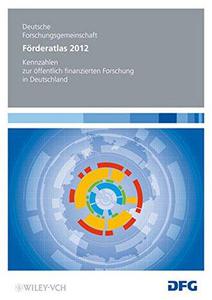
Forderatlas Deutschland 2012: Kennzahlen zur offentlich finanzierten Forschung in Deutschland By Deutsche Forschungsgemeinschaft (DFG)(auth.)
2012 | 588 Pages | ISBN: 3527333789 | PDF | 48 MB
Content: Chapter 1 Einleitung (pages 15-20): Chapter 2 Offentlich geforderte Forschung in Deutschland - ein Uberblick (pages 21-69): Chapter 3 Forderprofile von Forschungseinrichtungen und Regionen (pages 71-107): Chapter 4 Forderprofile je Wissenschaftsbereich und Fachgebiet (pages 109-164): Chapter 5 DFG?Forderung an universitatsmedizinische Einrichtungen (pages 165-176): Chapter 6 Nationale und internationale Kooperation im Spiegel bibliometrischer Daten - das Beispiel „Chemie" (pages 177-185): Chapter 7 Schlussbetrachtung (pages 187-190): Chapter 8 Literatur? und Quellenverzeichnis (pages 191-194):
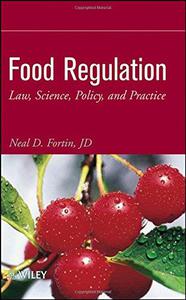
Food Regulation: Law, Science, Policy, and Practice By Neal D. Fortin(auth.)
2007 | 688 Pages | ISBN: 0470127090 | PDF | 5 MB
Food Regulation: Law, Science, Policy, and Practice provides an in-depth discussion of the federal statutes, regulations, and regulatory agencies involved in food regulation. After an introduction to U. S. food and drug regulation, it covers current food regulations, inspection and enforcement, international law, the Internet, and ethics. While it contains detailed discussions of policies and case studies, the book is accessible to students and professionals. This is an excellent text for courses in food science, food law, etc., and a practical reference for food industry professionals, consultants, and others.Content: Chapter 1 Introduction to Food Regulation in the United States (pages 1-34): Chapter 2 What Is a Food? (pages 35-46): Chapter 3 Food Labeling (pages 47-92): Chapter 4 Nutritional Labeling, Nutrient Level Claims, and Health Claims (pages 93-148): Chapter 5 Economic and Aesthetic Adulteration (pages 149-194): Chapter 6 Food Safety Regulation (pages 195-252): Chapter 7 Food Additives, Food Colorings, Irradiation (pages 253-320): Chapter 8 Dietary Supplements (pages 321-411): Chapter 9 Biotechnology and Genetically Engineered Organisms (pages 413-455): Chapter 10 Food Terrorism (pages 457-467): Chapter 11 Importation and Exportation (pages 469-492): Chapter 12 Federal Enforcement (pages 493-535): Chapter 13 Inspections (pages 537-573): Chapter 14 State Laws and Their Relationship to Federal Laws (pages 575-604): Chapter 15 Private Actions (pages 605-635): Chapter 16 International Food Law (pages 637-652): Chapter 17 Ethics (pages 653-662):


